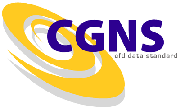
CFD General Notation System
What is CGNS?
The system consists of two parts: (1) a standard format for recording the data, and (2) software that reads, writes, and modifies data in that format. The format is a conceptual entity established by the documentation; the software is a physical product supplied to enable developers to access and produce data recorded in that format.
The CGNS system is designed to facilitate the exchange of data between sites and applications, and to help stabilize the archiving of aerodynamic data. The data are stored in a compact, binary format and are accessible through a complete and extensible library of functions. The API (Application Program Interface) is platform independent and can be easily implemented in C, C++, Fortran and Fortran90 applications.
How can CGNS help you?
- It improves the longevity (archival quality) of data
- It makes it easier to share data files between sites and collaborators
- It is easily extendible to include almost any type of additional data you can think of
The CGNS project originated in 1994 as a joint effort between Boeing and NASA, and has since grown to include many other contributing organizations worldwide. In 1999, control of CGNS was completely transferred to a public forum known as the CGNS Steering Committee. This Steering Committee is made up of international representatives from government and private industry. Additional history on the development of CGNS is available here.
The principal target of CGNS is data normally associated with compressible viscous flow (i.e., the Navier-Stokes equations), but the standard is also applicable to subclasses such as Euler and potential flows. The CGNS standard includes the following types of data.
- Structured, unstructured, and hybrid grids
- Flow solution data, which may be nodal, cell-centered, face-centered, or edge-centered
- Multizone interface connectivity, both abutting and overset
- Boundary conditions
- Flow equation descriptions, including the equation of state, viscosity and thermal conductivity models, turbulence models, multi-species chemistry models, and electromagnetics
- Time-dependent flow, including moving and deforming grids
- Dimensional units and nondimensionalization information
- Reference states
- Convergence history
- Association to CAD geometry definitions
- User-defined data
All CGNS software is free. The distribution and use of the CGNS software is covered by the following license:
This software is provided "as-is", without any express or implied warranty. In no event will the authors be held liable for any damages arising from the use of this software.
Permission is granted to anyone to use this software for any purpose, including commercial applications, and to alter it and redistribute it freely, subject to the following restrictions:
- 1. The origin of this software must not be misrepresented; you must not claim that you wrote the original software. If you use this software in a product, an acknowledgment in the product documentation would be appreciated but is not required.
- 2. Altered source versions must be plainly marked as such, and must not be misrepresented as being the original software.
- 3. This notice may not be removed or altered from any source distribution.
This license is borrowed from the zlib/libpng License, and supercedes the GNU Lesser General Public License (LGPL) which previously governed the use and distribution of the software.
We encourage anyone to freely use the CGNS logo when distributing or documenting CGNS related information. The logo adds prestige and credibility to web sites, publications, displays, announcements, and activities. However, the use of the logo in such a way as to imply approval, endorsement, or responsibility of the CGNS committee is prohibited without written permission.